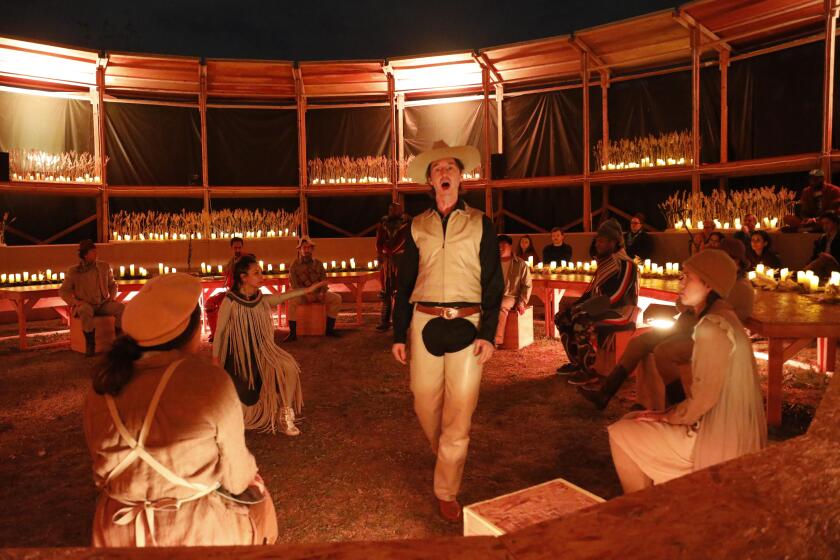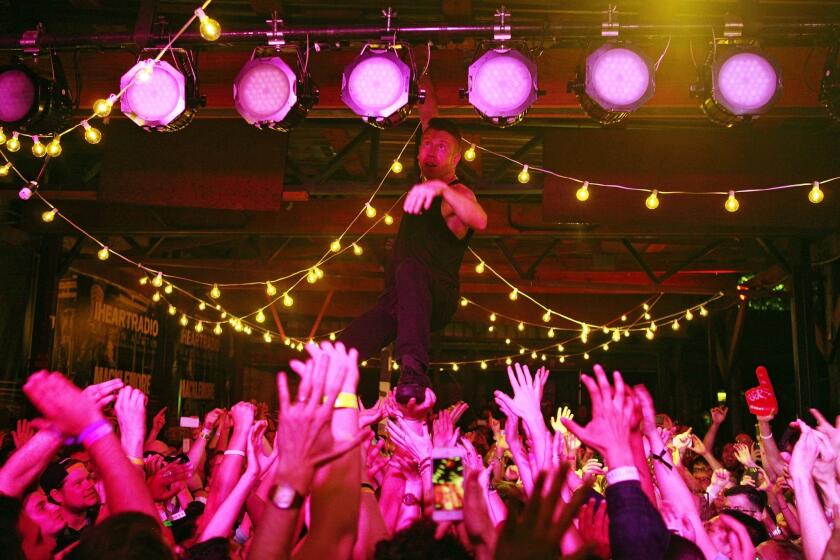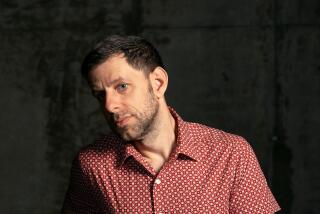‘Sweet Land’s’ radical design uses Los Angeles to rethink the architecture of opera

- Share via
It is an opera about land whose main set is, quite literally, the land that makes up Los Angeles. The soil and rocks and fragments of industrial detritus that can be found underfoot in the city, the parts not blanketed in concrete.
“Sweet Land,” the site-specific opera created by the Industry, the company founded by Yuval Sharon, is a story about those who live as part of the land and those who seek to own it. It is, in abstract ways, the story of U.S. colonization. But it could be any story in which Arrivals (as the opera labels its newcomers) land in a place and soon overtake their Hosts (longtime inhabitants).
And for this reason, the opera takes place not in a performance hall or warehouse (that great contemporary signifier of avant-garde-iness) but on the land itself: a corner of Los Angeles State Historic Park in downtown, where a trio of structures in which the opera is performed sits lightly on the soil — so lightly, in fact, that to be a spectator of “Sweet Land” is to stand amid dandelions and get your shoes covered in dust.
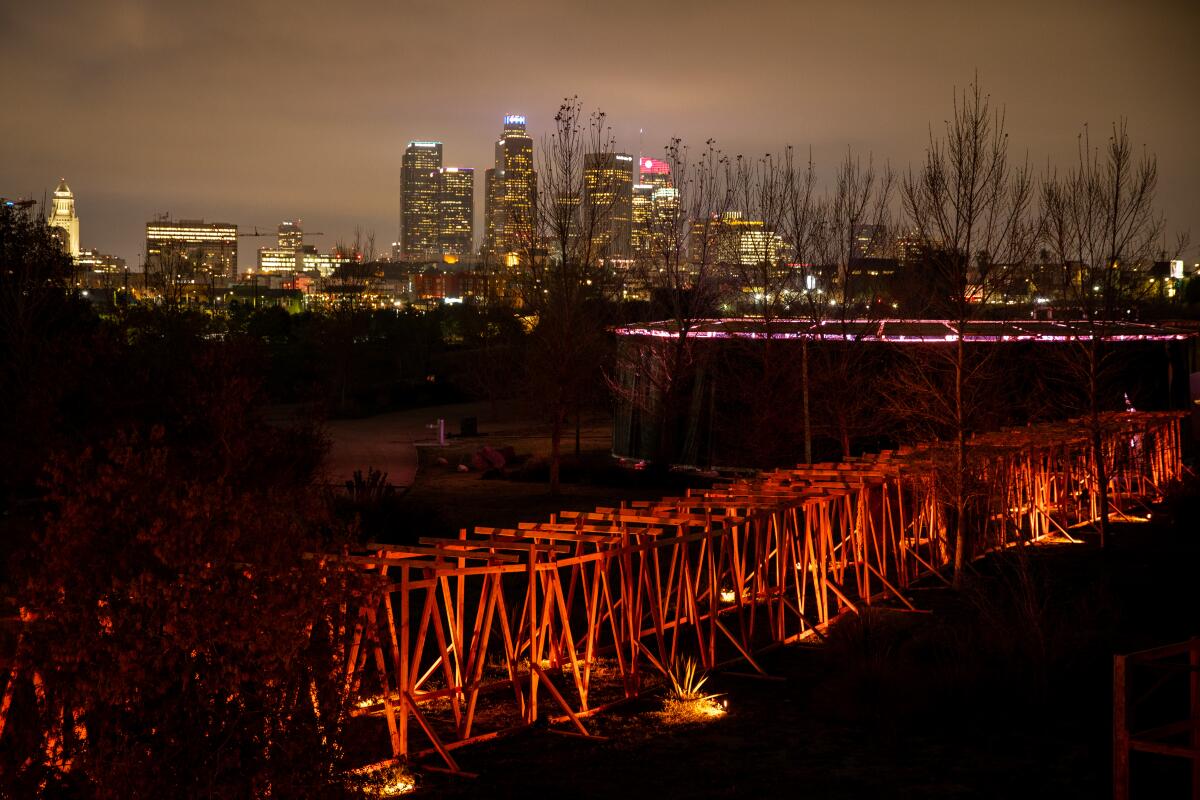
“It had to be in conversation with the land,” says Carlo Maghirang, a scenic designer for the opera.
“You are using the buildings only to frame what’s there,” adds Tanya Orellana, codesigner on the project. “Not having a floor was really important.”
“Sweet Land” has drawn critics’ attention for the innovative ways in which it has addressed its fraught topic: a nonlinear narrative, stripped of place and time, that reflects on the violence of colonization but also on systems of belief and resilience. The narrative takes place on a pair of parallel tracks — titled “Feast” and “Train” — and the audience sees only one of them over the course of a show.
(On Friday morning, the Industry announced that it was canceling any remaining performances due to the COVID-19 pandemic, but the company is working on a video recording of the opera that it hopes to make available for on-demand streaming by March 20.)
In his review, Times classical music critic Mark Swed described the work as “opera as astonishment.”
Opera phenom Yuval Sharon, Native artists Cannupa Hanska Luger and Raven Chacon, and Chinese-born composer Du Yun deliver a gloriously ambitious show.
Just as astonishing is the opera’s design — the sets, costumes and projections — which dispenses with the visual tropes of U.S. colonial history (pilgrim hats, feathered headdresses) in favor of elements that feel postindustrial and retro-futuristic.
“The main thing is to remove specificity,” says Cannupa Hanska Luger, who codirected the opera with Sharon.
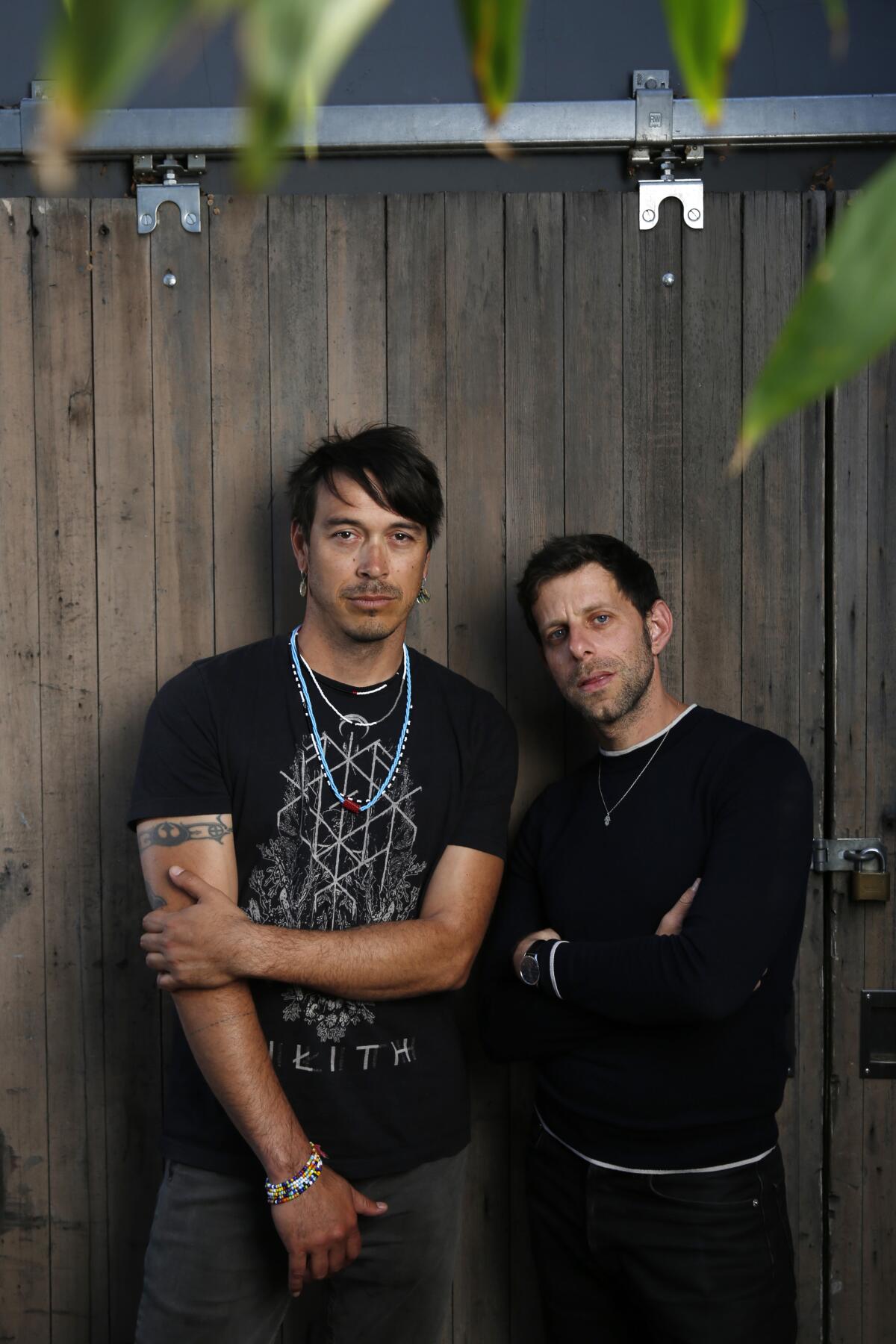
The design also dispenses with the visual tropes of opera.
Gone is the traditional proscenium stage. Instead, a set of bleachers crafted from unfinished lumber overlooks an industrial boneyard on the eastern end of the park. This raw space is where the audience begins and ends its journey. Functioning as backdrop are the tracks of the Gold Line, the North Broadway Bridge (a handsome Beaux Arts structure built in 1911) and the illuminated neon crucifix belonging to the Young-nak Church of L.A. in the distance.
Coachella, SXSW, “Hamilton,” the next “Fast and Furious” movie and even Disneyland have been affected by the coronavirus. But wait — there’s more.
When the narrative splits, the audience also splits, migrating through wood-frame tunnels to one of two circular theaters, also fabricated from raw lumber, in which viewers are promptly immersed in the performance — be it the candle-lit banquet that greets the viewers of “Feast” or the rolling walls that serve as evocations of locomotives in “Train.” (The latter is a remarkable feat of design — like being placed in a swirling vortex.)
“You are an Arrival,” says Maghirang of the sensation the designers wanted to inspire. “You are arriving in this land. And you are part of this critique.”
“We were like, how do we do this so that we don’t let the audience off the hook — that this is the land where this happened?” says Sharon. “Los Angeles State Historic Park feels like a central character in ‘Sweet Land.’”
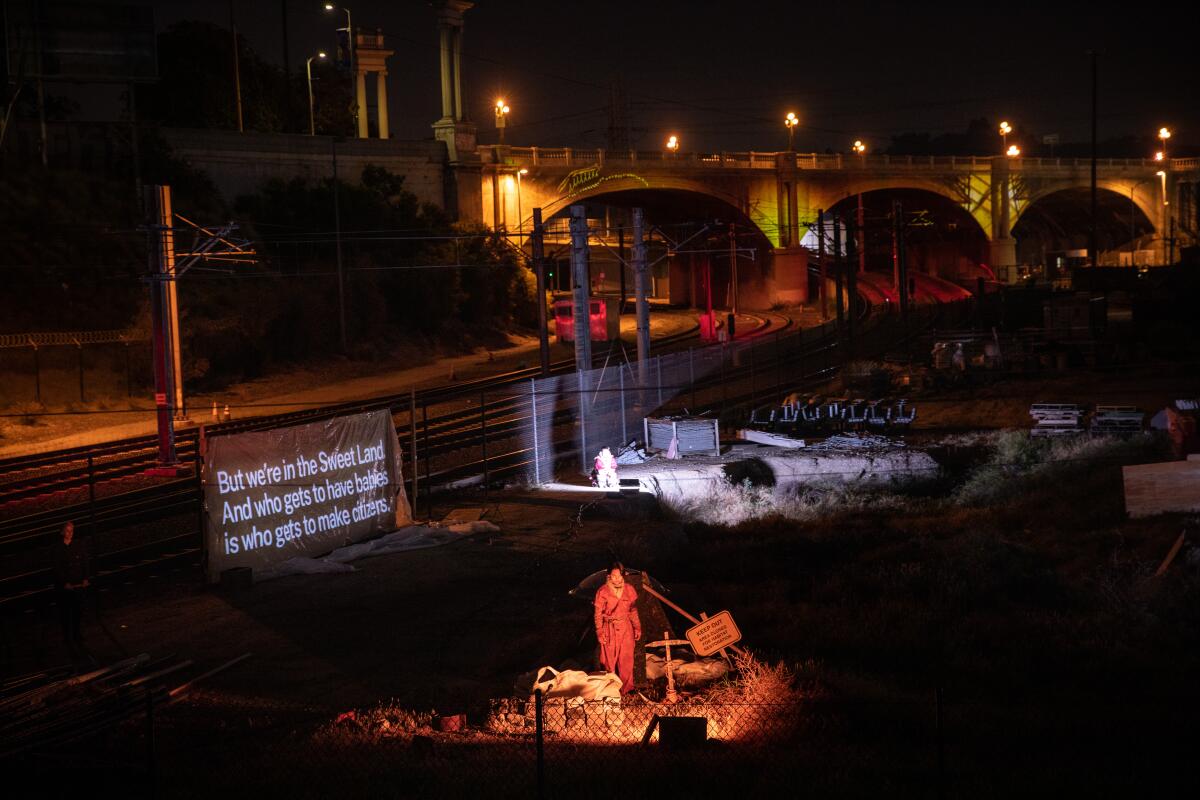
These design choices emerge out of the opera’s narrative but also its intense collaboration — a creative team that worked not as top-down enterprise but as a collective. Sharon teamed up with Luger, a visual artist who is based in New Mexico, to codirect. Two poets — Aja Couchois Duncan and Douglas Kearney — supplied the libretto. Composers Raven Chacon and Du Yun wrote the music. Maghirang and Orellana collaborated on the set design. Luger shared costume design duties with E.B. Brooks.
“This opera is an opportunity to look at the founding of the United States from different perspectives,” says Orellana. “We were coming at it from many different angles.”
Part of that included a multitude of indigenous perspectives. Chacon is an enrolled member of the Navajo Nation. Duncan is part Ojibwe. Luger is an enrolled member of the Mandan, Hidatsa and Arikara Nation who grew up on the Standing Rock Reservation in North Dakota.
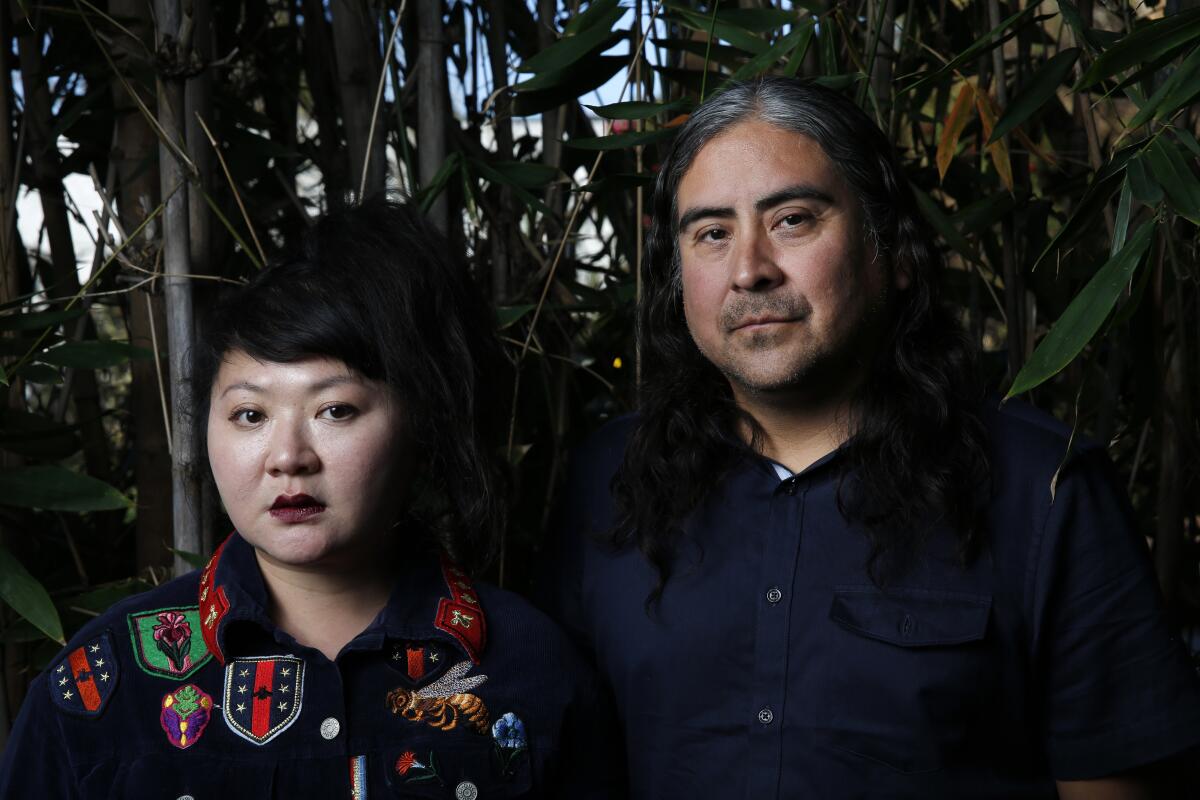
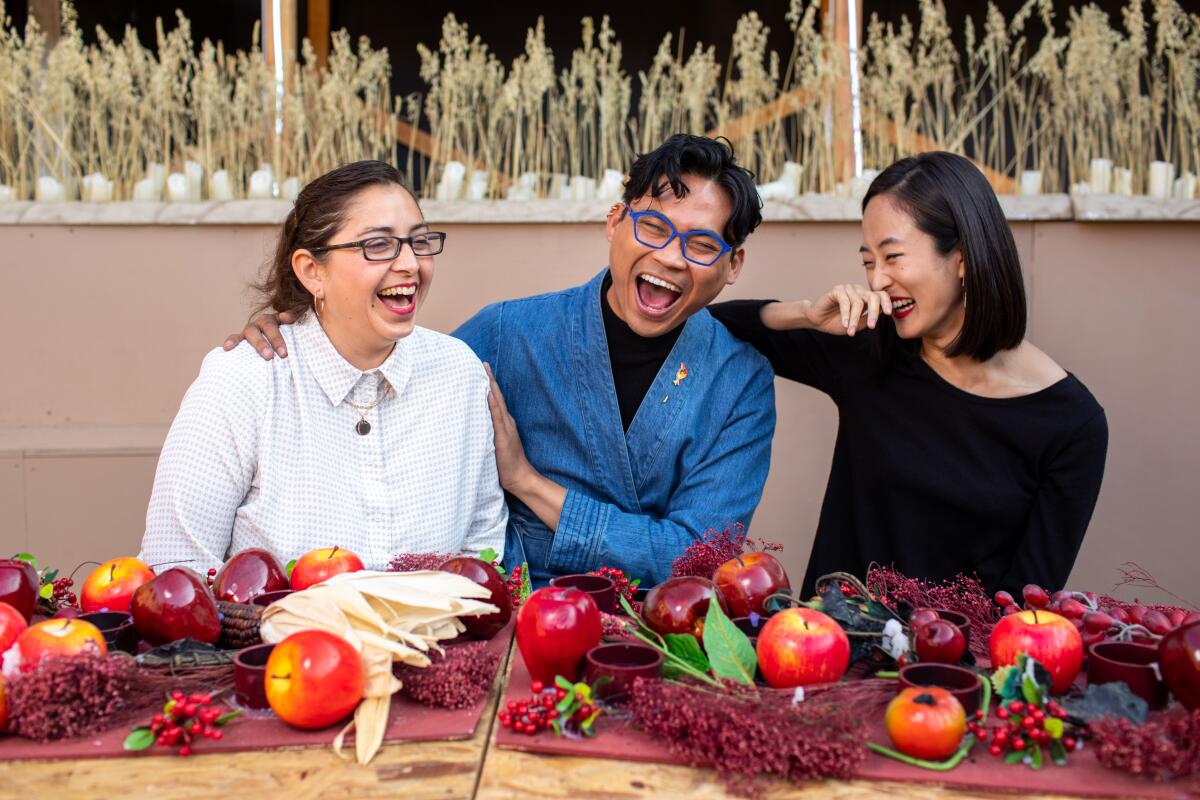
Luger’s vision was essential to the costume design, with its aesthetics drawn from an ongoing art project dubbed “Future Ancestral Technologies,” which imagines a futuristic indigenous regalia that isn’t specific to a single ethnicity.
“A lot of the work I’ve been doing is looking at science fiction, indigenous futurism,” he says. “One of the core ideas is that rather than manufacturing new material, how do you repurpose existing material?
“I found that used sporting equipment is built for dynamic movement and makes great infrastructure for costumes and regalia. Some of the designs to displace impact actually look like indigenous graphic design, like the shin pads — they have these plated lateral and diagonal lines and it looks a lot like indigenous beadwork.”
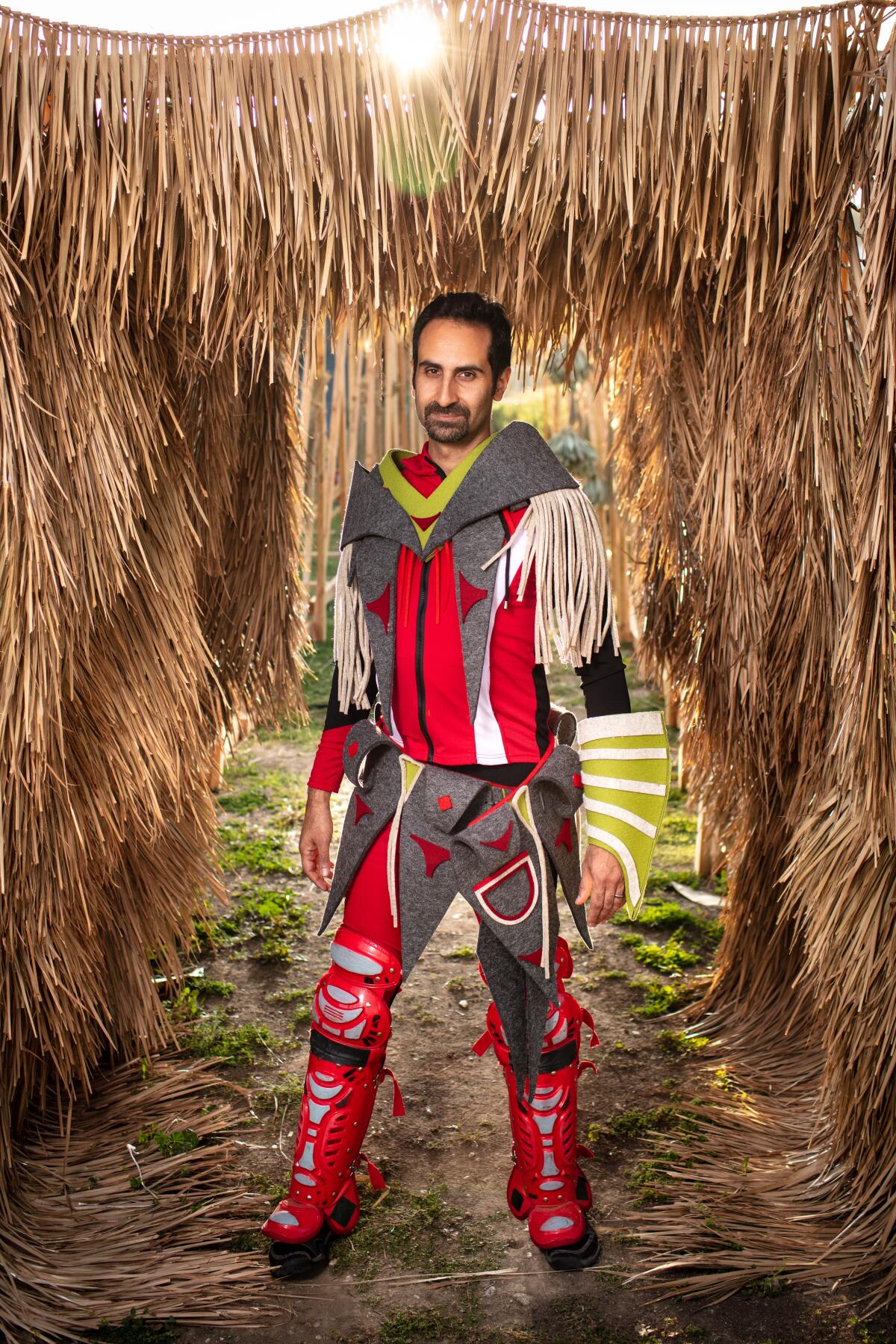
The Hosts wear ensembles creatively engineered out of shin guards and shoulder pads and hockey gloves. These are accented with bright, geometric arrangements of industrially milled felt, remnants that Luger scooped up from a manufacturer in Albuquerque at no cost.
“I like the subtlety of talking about a postindustrial experience,” Luger says. “How do we escape the weight of primitivism and look at some of these new materials?”
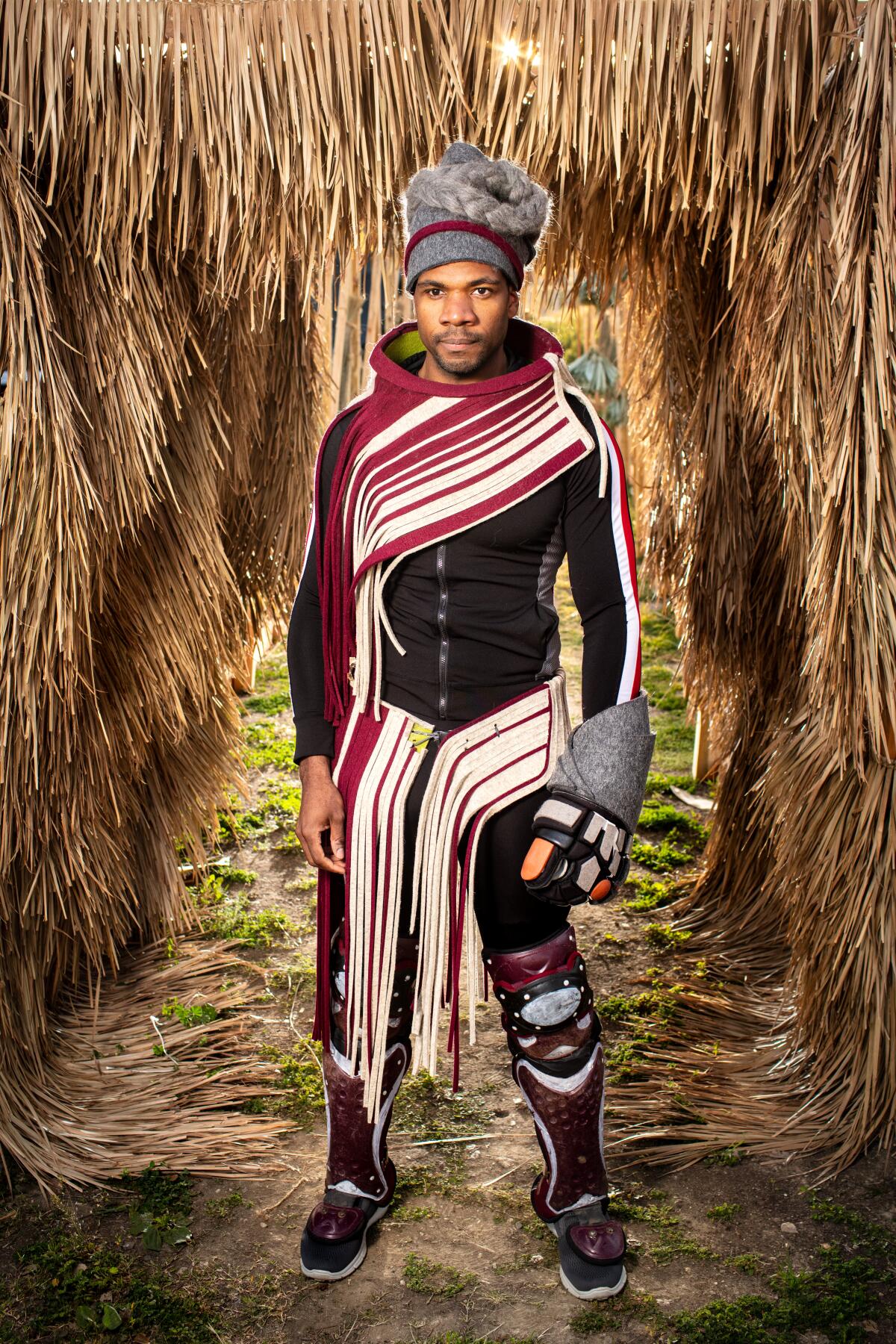
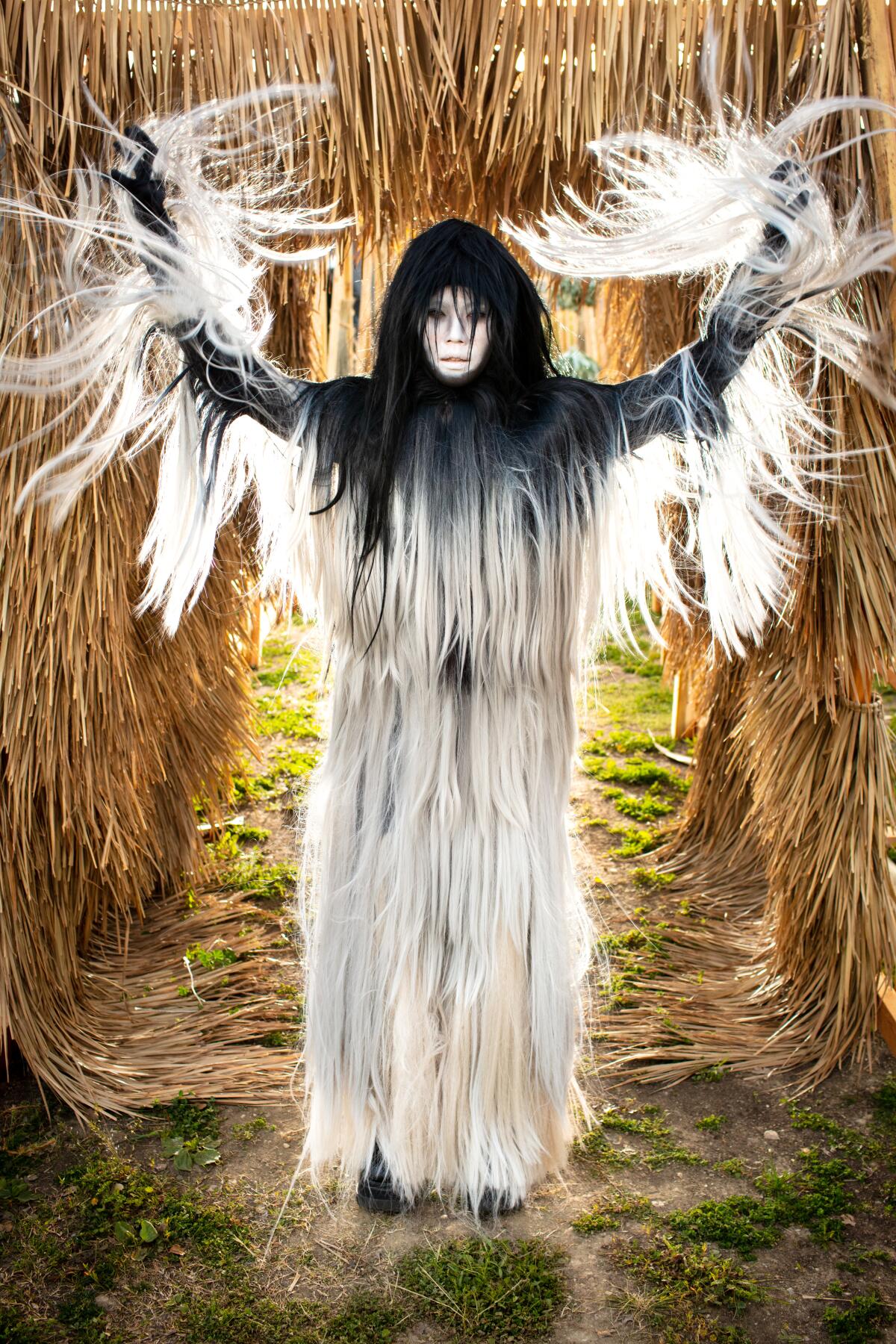
The opera takes the indigenous — often relegated to the past in U.S. history — and makes it wildly futuristic. Its design also serves as counter to the frequent pop cultural depictions of Native Americans as bellowing warriors.
“We are embedded as combatant with mascotry and all of that,” says Luger. “It reinforces us as enemy. And that savagery, it’s for sale. Disney sells it. Every sports team that is ‘honoring’ us is honoring only one perspective. You never see sports teams called things like the Aztec Astronomers.”
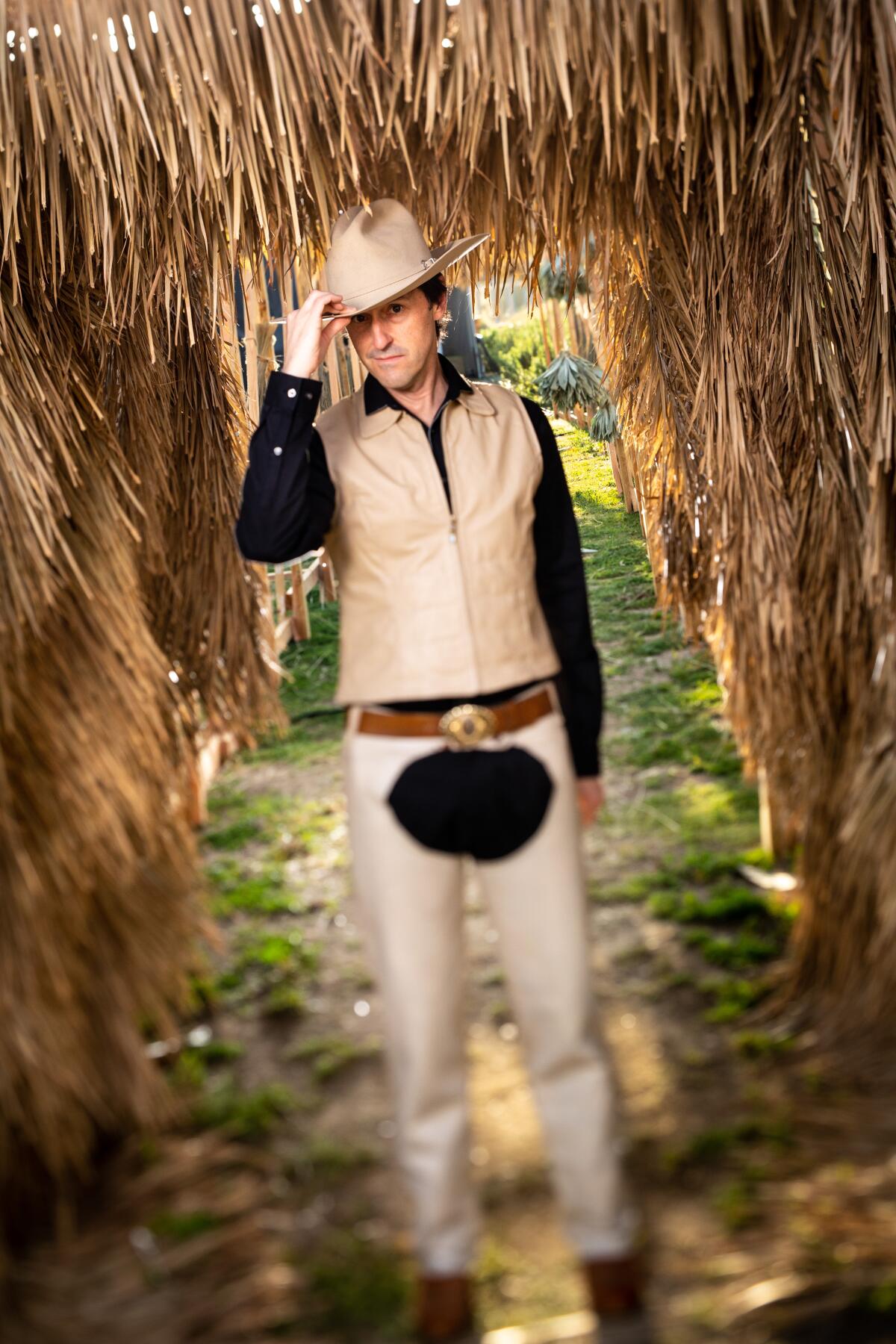
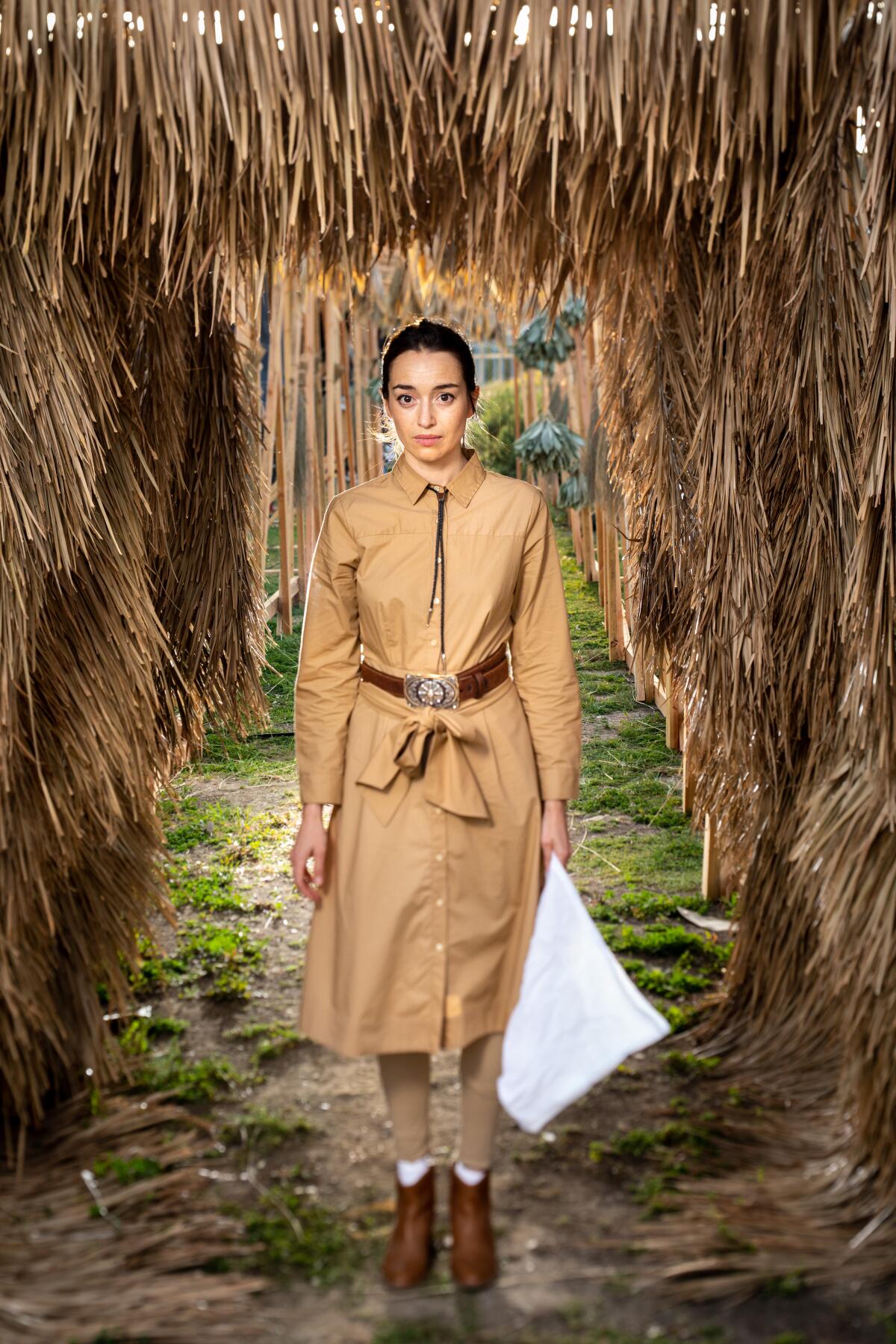
Much of the opera’s design was about working with what was available. The theaters were placed where land was flattest and they wouldn’t disturb any trees. The boneyard supplied a ready-made postindustrial landscape.
Hana S. Kim’s skillful projection design employed the back of a billboard to project supertitles and the North Broadway Bridge to show the silhouettes of galloping animals.
At the beginning of the opera, a scrim features projections of Tongva patterns, which soon dissolve into other forms.
“It’s a nod,” says Kim. “The beginning would be the most grounded — it’s our departure point — into something more abstract and complex.”
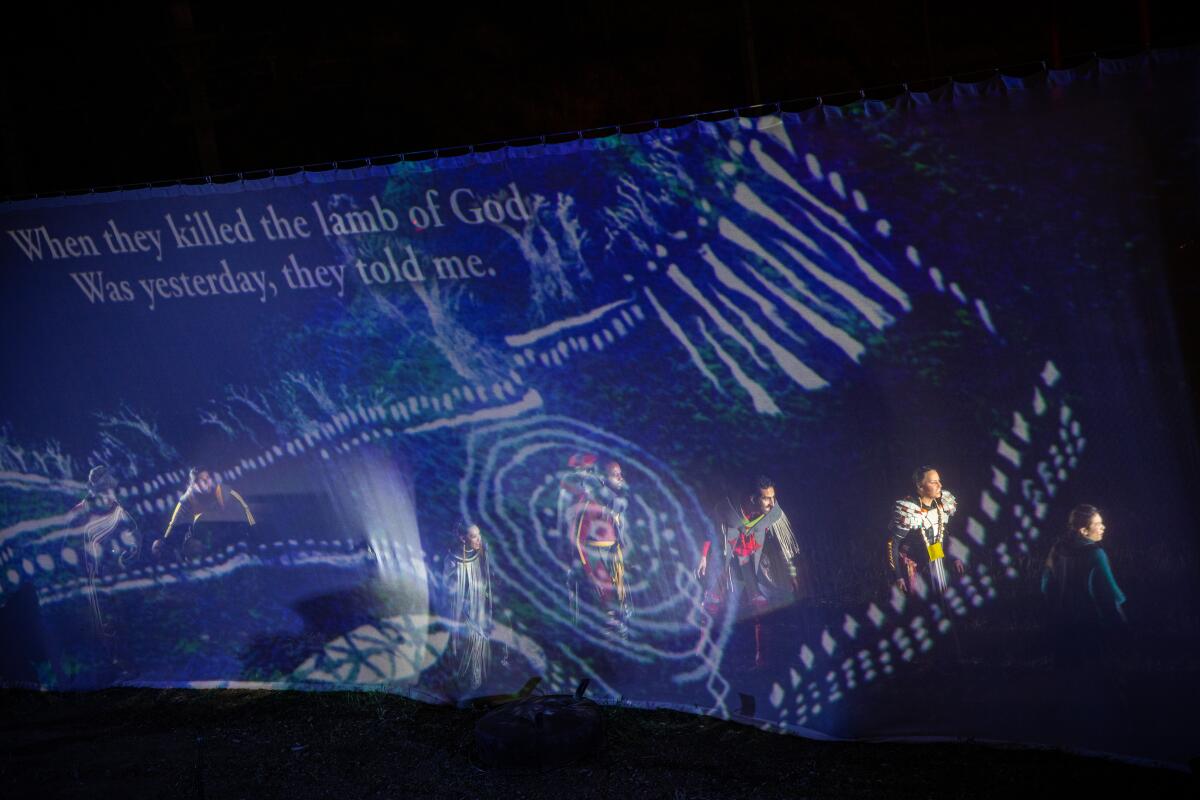
“Sweet Land” is placeless and timeless, but in its design it has Los Angeles in its bones.
There is the landscape. But also the sound of helicopters. The rumbling Gold Line. The wheezy exhale of braking buses. This keeps the opera “eternally fresh,” says Luger. Every day, “Those environmental cues are different.”
It also makes Los Angeles State Historic Park a central player.
The park marks the city’s cradle: the Tongva village known as Yaanga that was ultimately replaced by the Spanish municipality established by several dozen pobladores in 1781.
Hosts and arrivals.
Sharon and Luger didn’t have to construct an elaborate set to evoke the epic narratives of colonization. Los Angeles has been building it for 239 years.
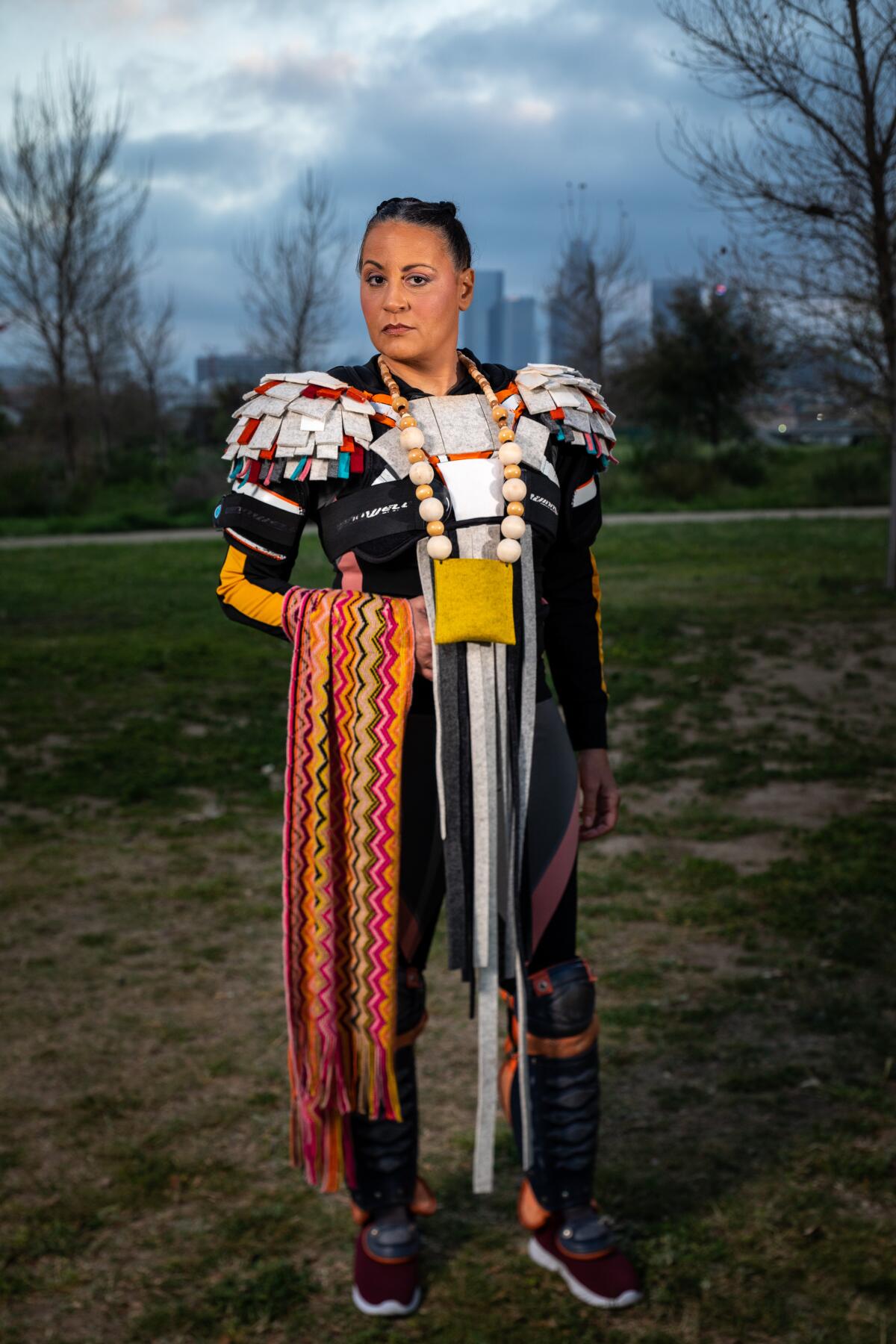
"Sweet Land"
More to Read
The biggest entertainment stories
Get our big stories about Hollywood, film, television, music, arts, culture and more right in your inbox as soon as they publish.
You may occasionally receive promotional content from the Los Angeles Times.
